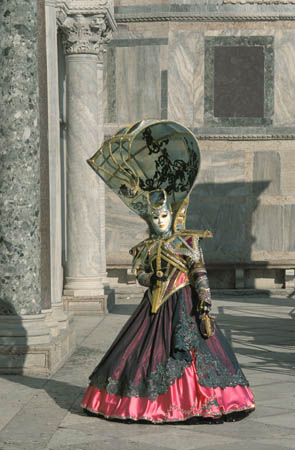 Although simple settings work well, it is also possible to use grand or large-scale locations. These might be scenic wonders, or man-made structures such as imposing buildings.
Although simple settings work well, it is also possible to use grand or large-scale locations. These might be scenic wonders, or man-made structures such as imposing buildings.
People photographed in landscapes should be positioned in a sympathetic manner at a location to which the eye will be drawn. The human figure is instantly recognizable even when relatively small in the frame, but composition is strengthened by elements that guide the eye to the centre of interest. This can be achieved not only by using lines suggested by the landscape but also by differences in colour and tone. Strong colours and dark tones can be used to lead the eye deeper into an image, as can depth of field and differential focusing. A person adds scale to a landscape, and might be used to emphasize the desolate or hostile nature of the surroundings. The subject can also be positioned to conceal an unwanted object.
The secret when using a grand location such as a large building is to find elements that relate the subject to the setting. Try to identify defining characteristics and separate them from other detail. These might help to create a strong sense of individuality linked in some way to the subject. It is not necessary to show every feature of a large backdrop. It might be better to strip detail down to the bare bones by careful selection of lens focal length or depth of field. There is a balance to be struck between including so much that the message of the image is lost, and going so close that the subject is isolated from the surroundings. Vary the camera position and observe how balance and background features change. Strive for equilibrium of subject and surroundings, but don't lose sight of the key components that project the message of the image.






